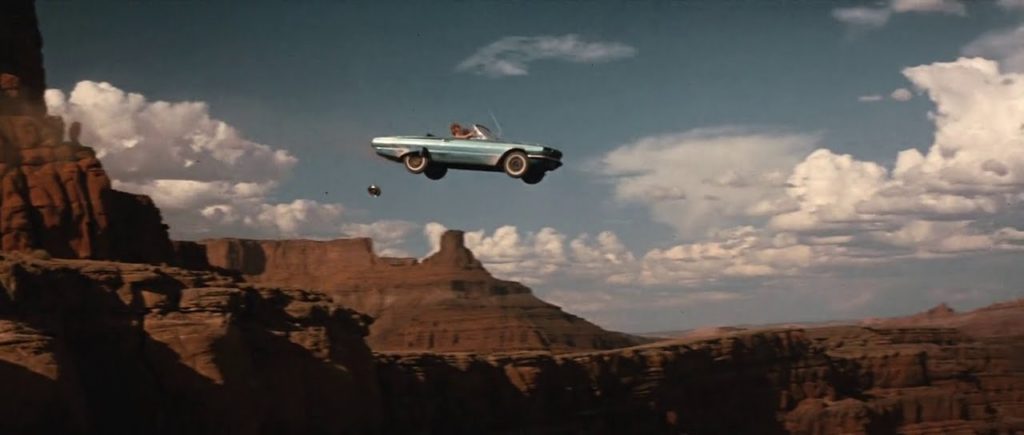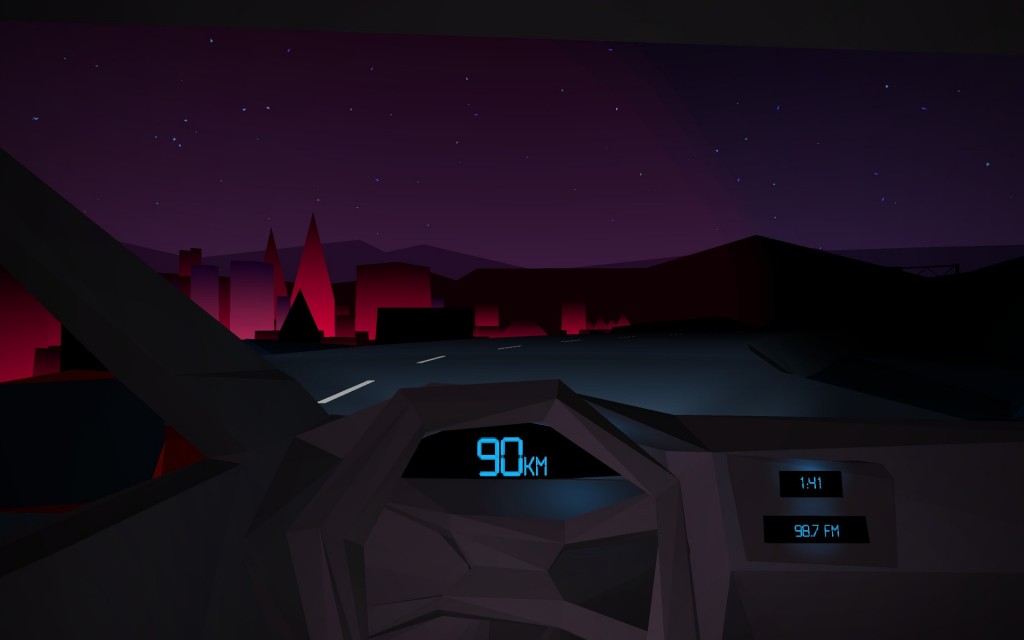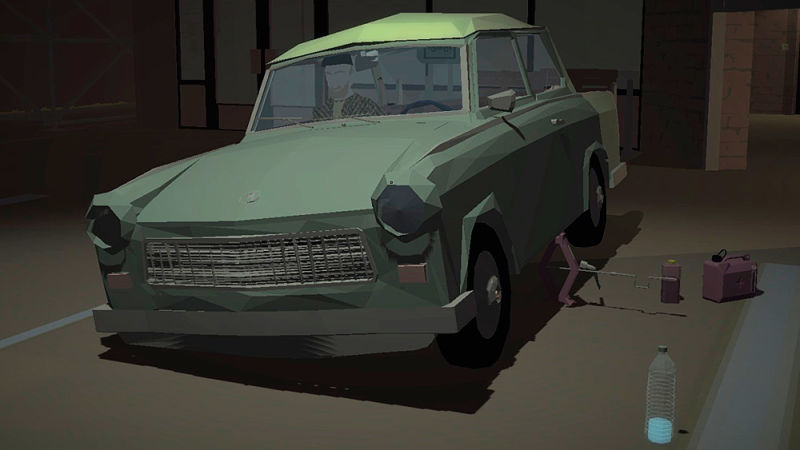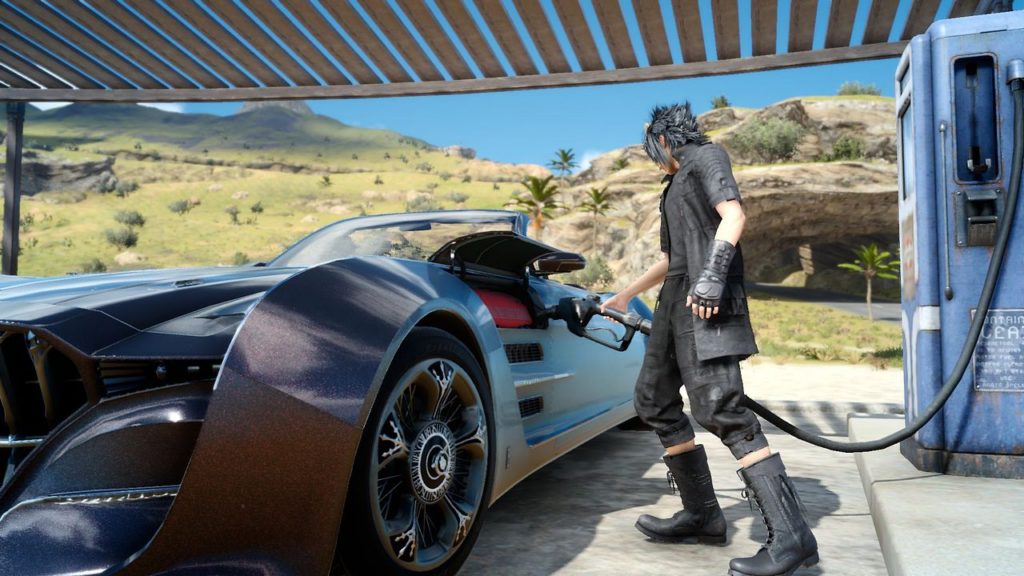There are five central characters in Final Fantasy XV. The first four are young men with impeccable hairdos and absurd names: Noctis, Gladiolus, Ignis, and Prompto. The fifth is a sleek black convertible stately enough to be named the Regalia.
Like every other Final Fantasy game, XV is about a long, dangerous journey across a fantastic landscape. Unlike the rest of the series, though, it doesn’t hang its story on the stuffy conventions of a Lord of the Rings-style cross-country wilderness hike, but through a road trip. The car, in Final Fantasy XV, is a central character. The Regalia is obsessively, onanistically detailed, its sleek chassis lengthened with horizontal lines that imply speed and a bulky hood so low and wide that a head-on view resembles a sporty snowplow. As the game’s heroes grow in power so too does the Regalia. Eventually, the sucker can even transform and take flight.
Final Fantasy XV, created by Japanese studio Square Enix, couches its road trip in the Americana of truck stop diners and an expansive country of varied climates (desert, coastal beaches, forests). From the succession of cars that brought Jack Kerouac around the continent, to Tom Wolfe’s time on Ken Kesey’s psychedelic school bus and John Steinbeck’s “Rocinante”—the camper he lived out of while navigating the U.S.—the American road trip is defined by its vehicles. But these stories are almost never directly concerned with the car itself. In the American imagination, the car represents personal freedom.

Still from Thelma & Louise (1991)
In film, the vehicle carries obvious visual significance. Captain America’s star-spangled motorcycle in Easy Rider (1969) became iconic shorthand for American outsiders. In Thelma & Louise (1991), the titular duo escapes the confines of patriarchy by taking to the road in a brawny Ford Thunderbird, ultimately vaulting off the Grand Canyon—suicide as an act of rebellion.
Final Fantasy XV is the latest game to explore the thematic potential of the road trip, but it’s far from the first. ceMelusine, Lucas J.W. Johnson, Andrew Grant Wilson, and Claris Cyarron’s Glitchhikers (2014) takes place entirely behind a car’s steering wheel. The player drives down a highway late at night, listening to the radio and chatting with the strange hitchhikers who occasionally materialize in the passenger seat. Johnson calls road trips “the perfect recipe for those mental meanderings that take us places we might not go otherwise.”
This is evident in how Glitchhikers bends the meditative nature of nighttime driving to surreal effect. It’s an approach also notably taken by Cardboard Computer’s Kentucky Route Zero (2013-ongoing), which sketches a modernizing American South through a cast of characters piled into a run-down delivery truck as they navigate a network of highways stretching into a strange subterranean world.

Glitchhikers is a very different game to Kentucky Route Zero, but both capture something essential about road trips. Johnson finds the root of this in the fact that cars are a liminal space—”a place between.” Both games suspend you in that in-between place, free from the tethers of daily life, elongating moments of twilight strangeness that otherwise might slip by without notice. It seems like a small thing, but the act of changing lanes and pressing forward on the accelerator in Glitchhikers places the player within the scene in a way unique to games.
MinskWorks’ in-development Jalopy puts you in the driver’s seat of the Laika 601 Deluxe, a boxy, fictional Soviet sedan reminiscent of historic vehicles like the Trabant. The player, whose face is never seen from the game’s first-person perspective, is represented by interactions with the car, which has to be continually maintained, repaired, and upgraded—from manually popping the hood to fix or refit components to raising a jack to replace tires—on a long-haul drive, buying and selling goods in perestroika-era Eastern Europe.
Jalopy’s Laika isn’t just a car, but an opportunity for freedom of movement and economic opportunity previously limited for citizens of the USSR and its satellite states. These heady concepts are channeled through play: the player feels the distance travelled on highways because she isn’t just observing the trip, but driving it herself. Earning money becomes a hard-won personal accomplishment, felt through the game’s systems rather than simply shown in the way of film or literature.

Greg Pryjmachuk, MinskWorks’ founder/designer, calls the car “your lifeline. It carries your load, gets you where you want to go, keeps you shielded from the elements.” It’s a character that the player is likely to form an attachment to as their form of income, protection, and freedom.
Final Fantasy XV doesn’t make players maintain the Regalia other than fueling up, and its characters aren’t really equipped to provide the heady conversations of Glitchhikers’ nighttime drive either. Instead, it’s a more hollow symbol, one that evokes but doesn’t fulfill the promises of The Car. This is clear from the moment the player first takes the wheel.
Despite its sporty look and the implications tied up in being, well, a car, the Regalia isn’t responsive in a Need for Speed way. Instead it drives almost by default, even in “manual” mode, ostensibly putting an emphasis on idle reflection as you watch the passing landscape. But here it fails to be truly meditative. Every time the player finds herself relaxing, zoning out to the sound of the engine or sleepily listening to the radio, one of the characters pipes up with a bit of inane, throwaway dialogue or the game halts you on a night drive for a random battle.

Final Fantasy XV doesn’t let the player reflect on or appreciate the Regalia as more than a pleasant aesthetic point of reference. Driving doesn’t impart anything of substance because the game keeps interrupting itself; it’s a signifier, a trapping in the same way the game throws around rural American and opulent European stereotypes—to say nothing of real-world brands like Cup Noodles and Coleman.
Unlike other games that have explored driving, Final Fantasy XV doesn’t make it matter through play. It’s only in looking outside the game, tracing the lineage of the car, that we can fill in the gaps. Then the Regalia becomes something more than just a vehicle, its cultural significance turning it into the character the game wants it to be.
